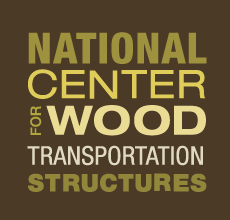Researchers
Pavana Vennapusa
About the research
In bridge abutment design, the Wisconsin Department of Transportation (WisDOT) assumes the granular backfill material used behind bridge abutments as free-draining and no hydrostatic pressures are applied on the wall. This research investigated whether backfill materials meet the assumption of a freely-drained condition through a detailed laboratory and field study. In addition, the researchers investigated the viability of using recycled-asphalt pavement (RAP) and shingles (RAS) for granular backfill.
Laboratory testing involved characterizing the materials in terms of gradation/classification, erodibility, permeability, shear strength, and volume change (i.e., water-induced collapse). Laboratory tests revealed bulking moisture content for natural materials and collapse upon wetting. RAP and RAS materials exhibited collapse upon wetting and creep under constant loading.
The researchers performed scaled abutment model testing to assess pore pressure dissipation rates for the different materials and calibrate input parameters to predict drainage using fine element analysis (FEA). Abutment model testing indicated that addition of geocomposite vertical drain can substantially increase pore pressure dissipation rates and avoid material erosion.
Field testing involved in situ permeability, shear strength, and moisture content testing, and monitoring lateral earth pressures and pore pressures behind abutment walls at four bridges.
Results indicated that field conditions are more complex than the simple linear stress distribution typically assumed in the design for lateral earth pressures. Lateral earth pressures were greater than assumed in design over a majority of the monitoring period of this study.
Pore pressures behind an abutment wall were observed at one site following flooding. Predicted pore pressure dissipations using numerical analysis matched well with the measured values.
The researchers provided recommendations specific to the current WisDOT practice for abutment granular backfill design and construction as part of this project.
